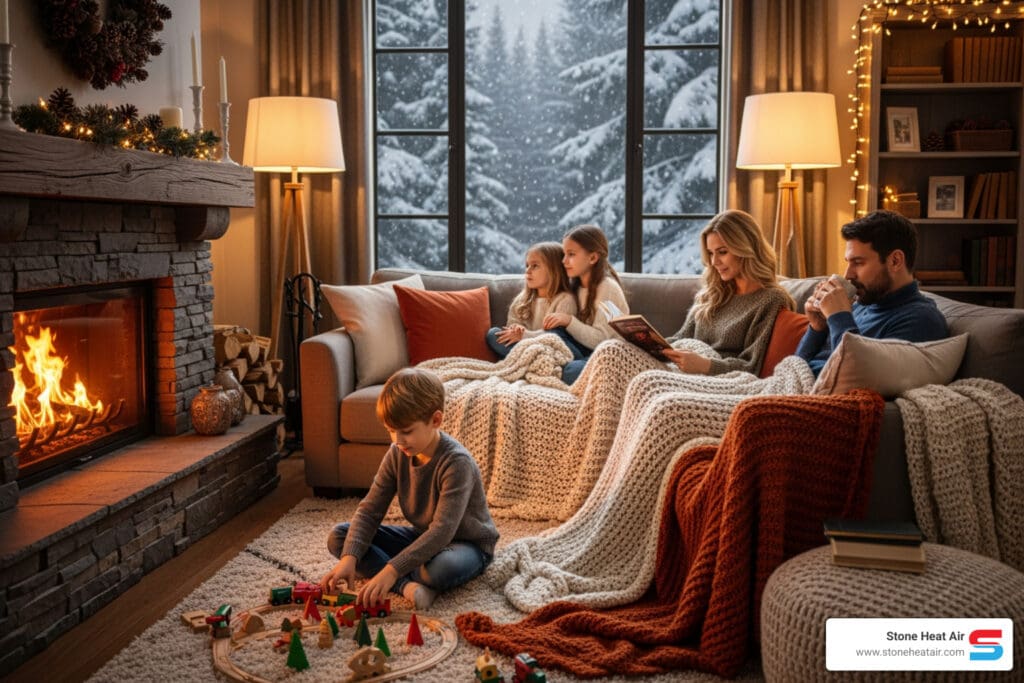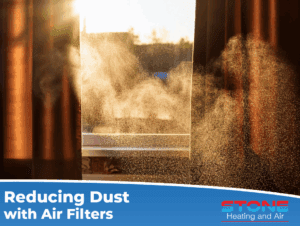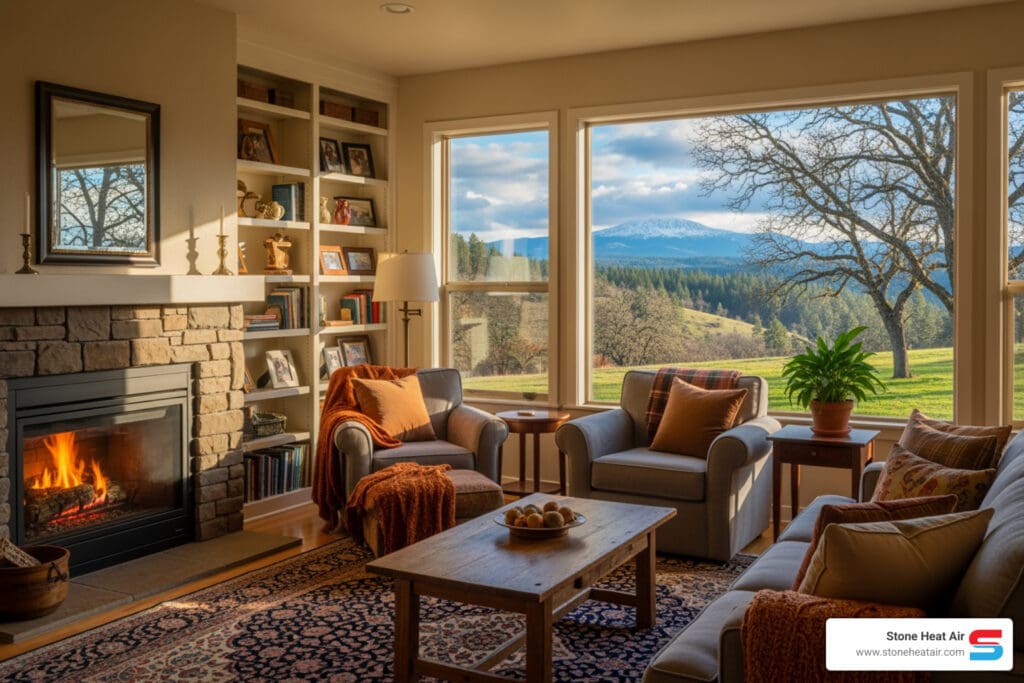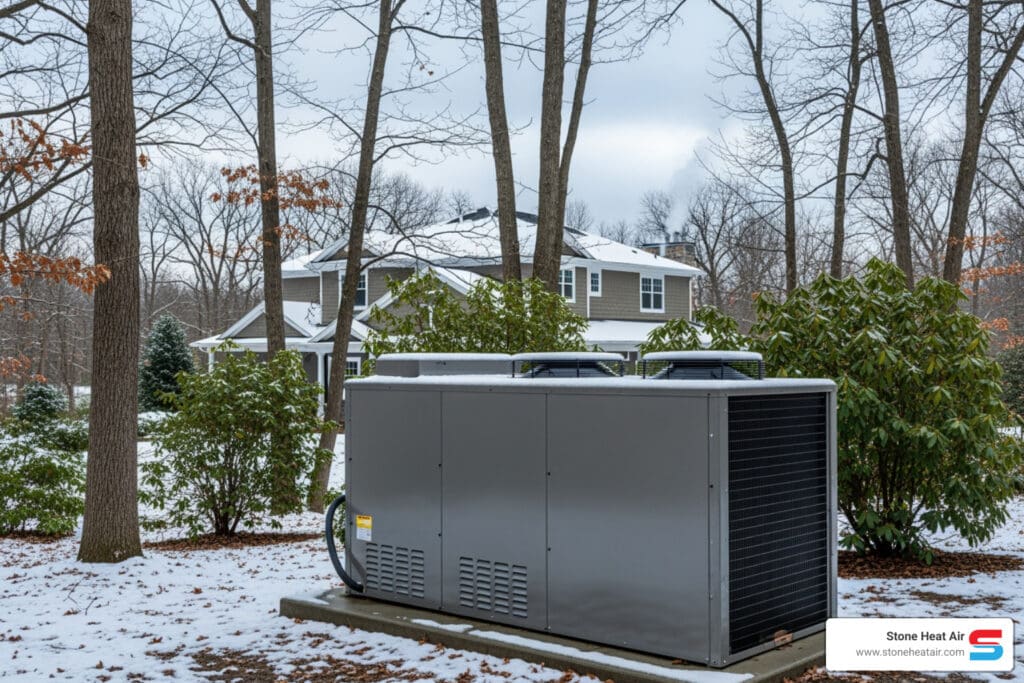Reducing Dust with Air Filters
When the dry, windy season arrives in Southern Oregon, dust becomes an unavoidable part of daily life. Whether you live near farmland where tilling stirs up the soil, in a neighborhood where new homes are under construction, or alongside wide fields that are being mowed, the result is the same—tiny particles begin to fill the air and make their way indoors. For many homeowners, this leads to more frequent cleaning, worsening allergies, and a noticeable decrease in indoor air quality. The good news is that your HVAC system can play a major role in defending your home from these seasonal challenges. By focusing on reducing dust with air filters and keeping your system professionally maintained, you can enjoy a cleaner, healthier home environment all season long.
 How Dust Becomes a Household Problem
How Dust Becomes a Household Problem
Dust in Southern Oregon is not just the result of open windows or tracked-in dirt. The geography of the Rogue Valley and surrounding areas, combined with strong seasonal winds, means that particles from agricultural fields, job sites, and cut grass can travel long distances. Once in the air, they enter your home through small gaps, doorways, and even your HVAC system itself. Without a clean, properly fitted filter, these particles circulate through your ductwork, settle on your furniture, and affect the quality of the air you breathe. This is where the importance of reducing dust with air filters becomes clear—your HVAC system is constantly processing the air in your home, which makes it the most effective point of capture for airborne particles.
The Role of Filters in Dust Control
Air filters are often overlooked because they are small and relatively inexpensive, but they are one of the most powerful tools you have in the fight against dust. Their job is simple yet essential: to trap airborne particles before they can move deeper into the system and return to your living spaces. When filters are clean and properly rated, they help prevent layers of dust from forming on surfaces, protect the blower and coils inside your system from buildup, and make it easier for everyone in your home to breathe comfortably.
The type of filter you use matters, too. Filters are rated using the MERV scale, which measures how effectively they can capture particles of different sizes. For many homes in Southern Oregon, a filter rated between MERV 8 and 11 provides effective control against the increased dust of farming and mowing seasons. In areas where construction or heavy agricultural work is nearby, upgrading to MERV 11–13 can make a noticeable difference. However, higher-rated filters can restrict airflow if your HVAC system isn’t designed to handle them, so it’s always wise to consult a professional before making changes.
Why Frequent Filter Changes Are Necessary
One of the most common mistakes homeowners make is waiting too long between filter replacements. In mild seasons, filters might last 60 to 90 days, but when dust is at its peak in Southern Oregon, that schedule simply isn’t enough. Because your system constantly pulls in air, the filters can quickly become overloaded, so they no longer trap particles effectively. During the dustiest months, it’s best to inspect your filter every month and expect to change it every 30 to 45 days. You can usually tell when a filter is ready to be replaced by holding it up to a light source—if little or no light passes through, it’s clogged and needs to go.
How Professional Maintenance Multiplies Results
While filters do the day-to-day work of capturing dust, they can’t solve every problem on their own. Over time, some particles bypass the filter or settle within the system itself. This is why professional HVAC maintenance is so important. When you schedule a seasonal tune-up with Stone Heating & Air, our technicians do much more than swap out a filter. We clean blower components and coils, both of which are magnets for dust. We also make sure the filter housing is sealing properly, since a poorly fitted filter can allow air—and dust—to slip around its edges.
Another essential part of maintenance is checking the ductwork. Leaks in return ducts, particularly those running through crawlspaces or attics, often allow dusty outside air to be drawn into the system. This is one of the hidden reasons many homeowners struggle with dust, even when they change filters regularly. A professional inspection can catch these problems early, seal leaks, and restore the system’s efficiency. By combining regular tune-ups with consistent filter changes, you’ll see the most success in reducing dust with air filters and keeping it out of your home for good.
Living Comfortably Through Dust Season
Of course, HVAC care is just part of the bigger picture. Day-to-day habits can also help control how much dust enters your living space. Closing windows in the afternoon when the winds are strongest, vacuuming registers and vents so they stay free of buildup, and keeping strong entry mats at the doorways all make a difference. For those tackling home projects like sanding, woodworking, or remodeling, it’s wise to isolate the workspace and replace the filter as soon as the job is done. These small steps, paired with a clean HVAC filter, create a powerful shield against the dust outside.
When to Consider Advanced Solutions
For some households, even diligent filter changes and professional maintenance aren’t enough. Families with allergy sensitivities, or homes located near heavy construction or agricultural areas, may benefit from upgraded filtration systems. Media cabinets with deep, pleated filters provide more surface area to capture particles without straining the system. Whole-home air purifiers, installed within the HVAC system, can neutralize and trap smaller particulates that standard filters miss. In addition, sealing ductwork prevents dusty attic or crawlspace air from being pulled inside. These advanced solutions, guided by a professional, ensure that your efforts in reducing dust with air filters are as effective as possible.
If you notice that filters clog unusually fast, that dust seems heavier in rooms far from the air handler, or that your energy bills climb without explanation, your HVAC system is probably struggling to handle the dust load. Other warning signs include hot and cold spots, visible puffs of dust when the system cycles on, or a decline in indoor air quality. These symptoms mean it’s time to schedule service before minor issues become costly repairs.
Cleaner Air, Cleaner Home
Dust doesn’t have to define life in Southern Oregon’s dry season. With a smart approach—changing your filters frequently, scheduling professional maintenance, and considering upgrades when necessary—you can keep your indoor environment comfortable and healthy. At Stone Heating & Air, we’re committed to helping local families enjoy cleaner air and longer-lasting HVAC systems. Our technicians are Carrier Authorized Dealers, trained to identify the best solutions for your home’s unique needs.
By joining our Stone Comfort Membership Club, we’ll keep your HVAC maintained throughout the year, including providing you with a year’s supply of air filters. It’s just another way we help to keep your home comfortable.
If you’re ready to take control of dust in your home, start with the essentials: focus on reducing dust with air filters and pairing that effort with professional HVAC care. Visit Stone Heating and Air today to schedule your seasonal maintenance and breathe easier this season.
Category: Air Filters, Indoor Air Quality
Request An Appointment
Related Content


 How Dust Becomes a Household Problem
How Dust Becomes a Household Problem
